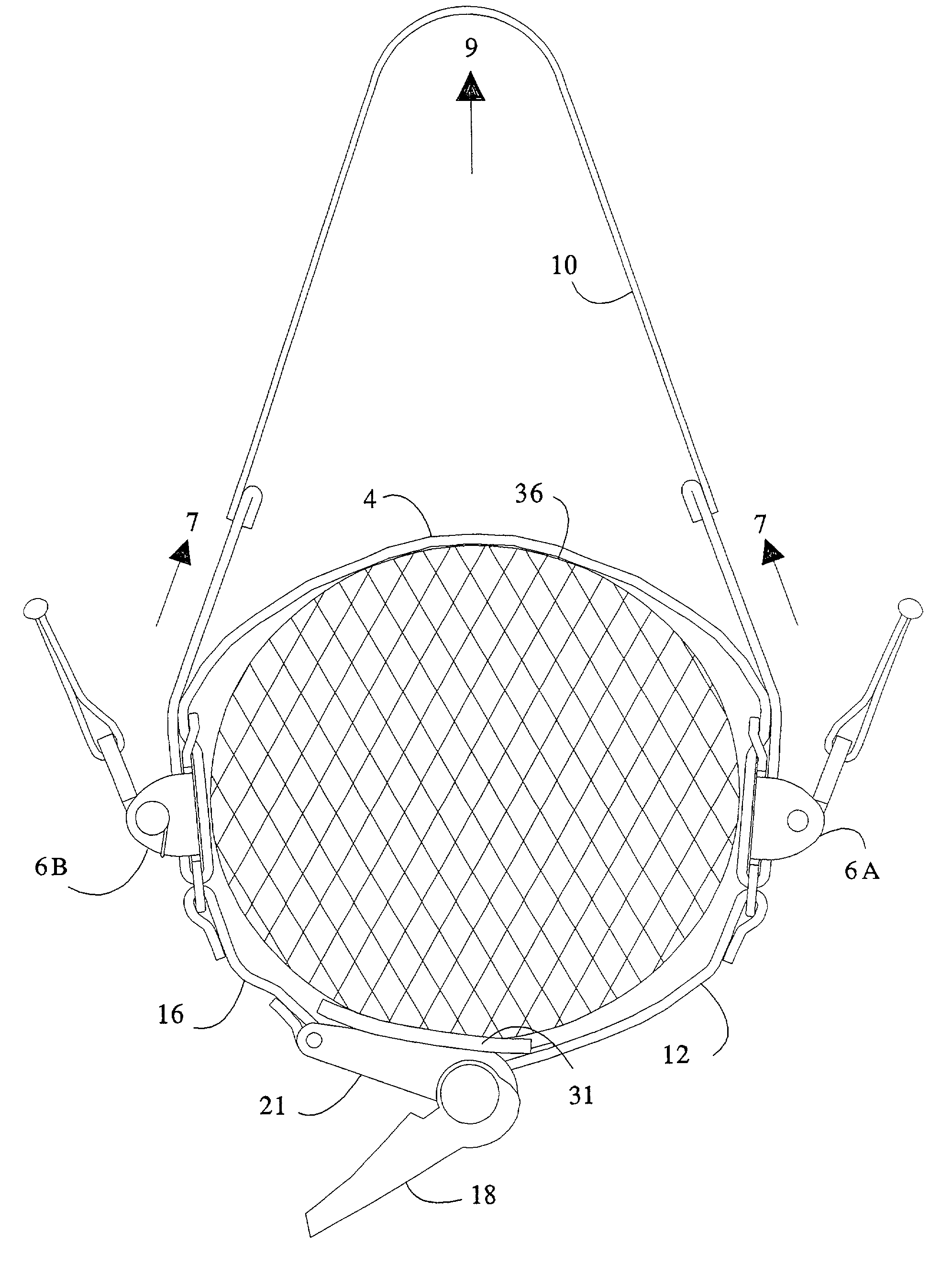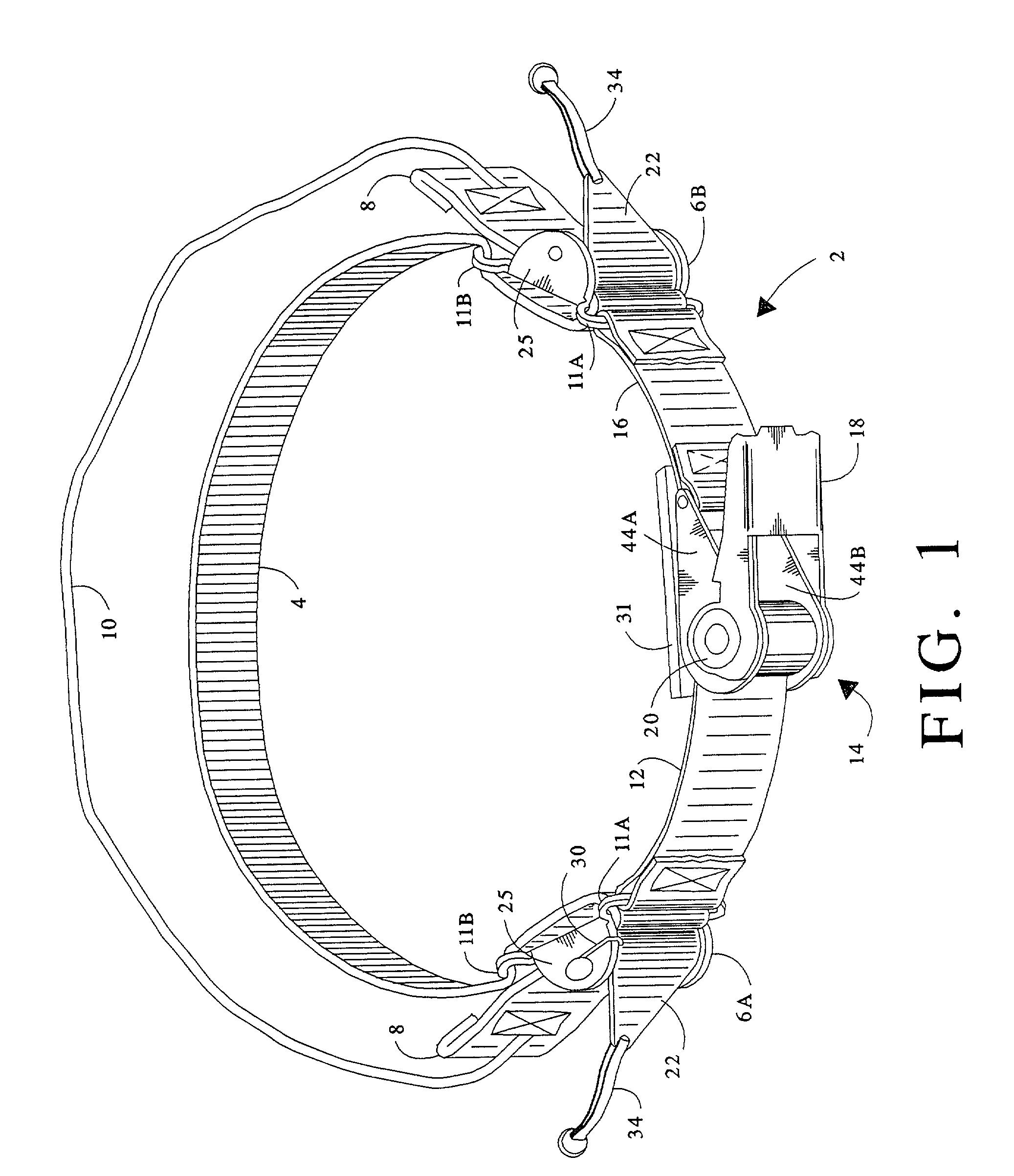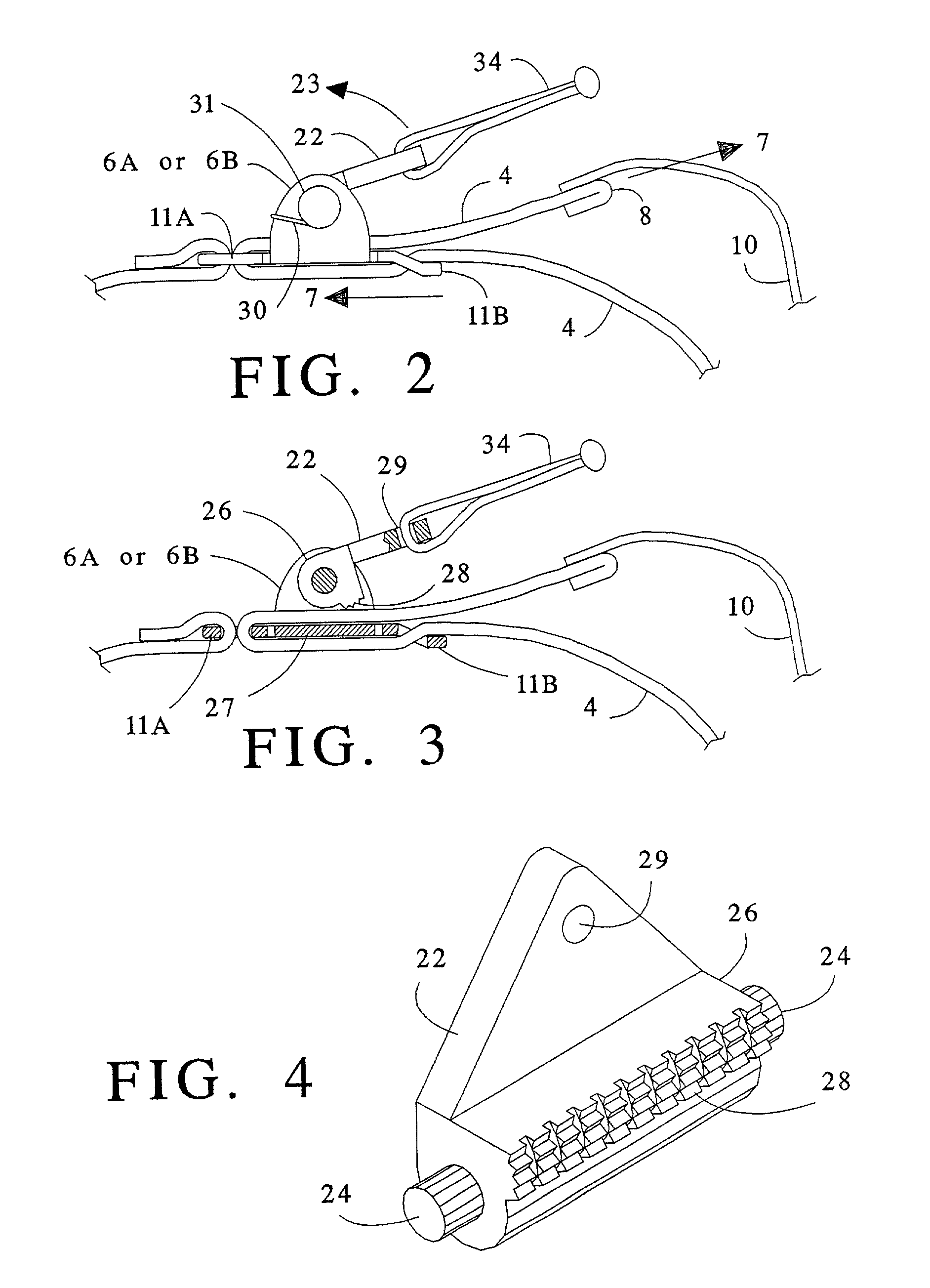Tourniquet device for single-handed operation
a single-handed operation and tourniquet technology, applied in the field of tourniquets, can solve the problems of difficult if not impossible for the injured person to effectively apply a tourniquet to the injured arm, the injury may only have a very short time to stop the bleeding in order, and the effective solution has not been found. to achieve the effect of restricting the flow of blood in the limb of the injured person
- Summary
- Abstract
- Description
- Claims
- Application Information
AI Technical Summary
Benefits of technology
Problems solved by technology
Method used
Image
Examples
Embodiment Construction
[0019]Referring to FIGS. 1 through 5, the tourniquet device of this invention as illustrated is generally designated 2. The invention has a first belt 4 having opposite ends 8 which loop back through respective “slip” buckles, 6A and 6B, which are so called because they each allow the belt 4 to easily slip through in one direction, indicated by arrow 7, but prevent movement of the belt through said each in the opposite direction. The first belt functions as one of two adjustable length segments of a tourniquet loop of this invention. A pull cord 10 extends between the first belt's opposite ends, each end of the pull cord being connected to a respective end 8 of the first belt 4. In operation, pulling the cord (in the general direction indicated by arrow 9 in FIG. 7) draws the end portions of the first belt further through respective slip buckles, in directions indicated by the arrows 7, and thereby shortens the segment of the first belt disposed between the slip buckles. Alternative...
PUM
 Login to View More
Login to View More Abstract
Description
Claims
Application Information
 Login to View More
Login to View More - R&D
- Intellectual Property
- Life Sciences
- Materials
- Tech Scout
- Unparalleled Data Quality
- Higher Quality Content
- 60% Fewer Hallucinations
Browse by: Latest US Patents, China's latest patents, Technical Efficacy Thesaurus, Application Domain, Technology Topic, Popular Technical Reports.
© 2025 PatSnap. All rights reserved.Legal|Privacy policy|Modern Slavery Act Transparency Statement|Sitemap|About US| Contact US: help@patsnap.com



